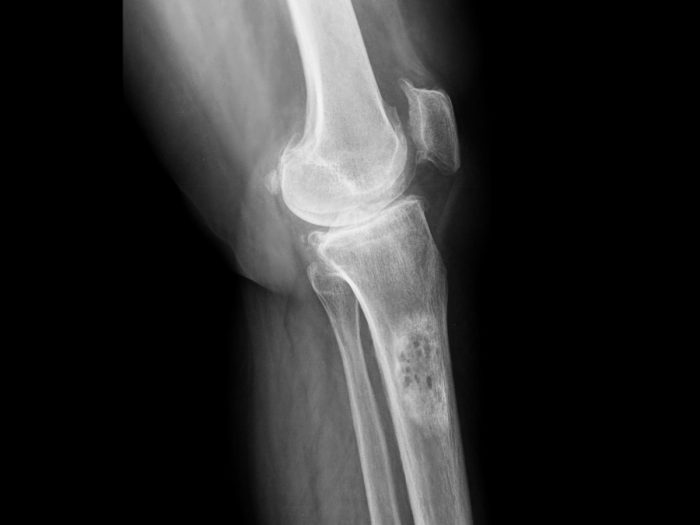

It is most common in young active patients aged 20–40 years. Patellar dislocation leads to osteochondral fracture through this mechanism and is responsible for 40–50% of osteochondral lesions around the femoral condyles. The shearing force creates a stress fracture through cartilage matrix, and sometimes through subchondral bone. Usually it is caused by sports injury or accidents. Trauma is the most common cause of osteochondral lesions. Degenerative defects are typically poorly demarcated and usually caused as a result of ligament instability, meniscal injuries, malalignment or osteoarthritis. Focal lesions are well delineated defects, usually caused by trauma, osteochondritis dissecans or osteonecrosis. There are two distinct chondral injury phenotypes according to attributing factors: focal lesions and degenerative lesions. Our purpose is to review the pathogenesis and treatment options of articular cartilage lesions of the knee. This fibrocartilage generally deteriorates over time, resulting in return of the original symptoms and occasionally reported progression to osteoarthritis. Regardless of the treatment method or the origin of repair factors, the end result is generally a fibrous repair tissue (fibrocartilage) which lacks the biomechanical characteristics necessary to withstand the compressive factors distributed across the knee during articulation. A wide range of options are practised nowadays, ranging from conservative measures, through simple arthroscopic interventions, marrow tapping techniques, osteochondral auto/allo-grafting, cell-based techniques, growth factors and emerging gene therapy techniques.
#BONE FRAGMENTS IN KNEE HOW TO#
Decisions about whether and how to treat an individual lesion are problematic.

Treatment of articular cartilage lesions in the knee remains a challenge for the practising orthopaedic surgeon. Sixty-five percent of the whole group had accompanying meniscal or ligament lesions, mostly ACL tear. Seventy-five percent of patients less than 40 years old had solitary lesions the rest had multiple chondral lesions. Curl et al., in a review of 31,516 knee arthroscopies, reported that 63% of knees had chondral lesions (averaging 2.7 lesions per knee) and 20% had full-thickness lesions, with 5% of these occurring in patients less than 40 years of age. Inferior repair commonly occurs, but stable regeneration of hyaline cartilage has never been documented. Osteochondral injuries are both naturally and therapeutically irreversible with current treatment parameters. Articular cartilage lesions in weight-bearing joints often fail to heal on their own and may be associated with pain, loss of function and long-term complications such as osteoarthritis.


 0 kommentar(er)
0 kommentar(er)
